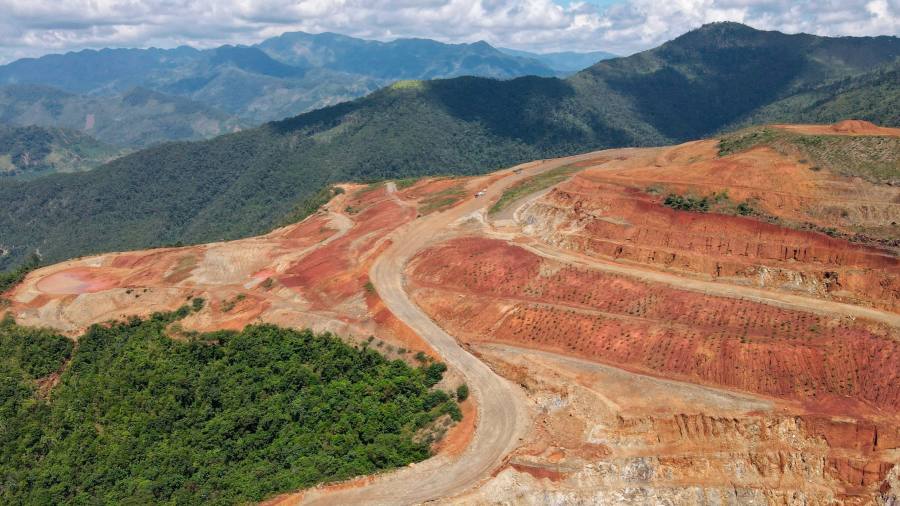
“Give me a break”, said the US president last month. “Enough is enough.”
There is nothing wrong with getting a fair return, argued Joe Biden. But with profits soaring, he was fed up with companies shovelling money to their shareholders rather than increasing investment in what the country needs. Biden was talking about US oil and gas drillers. Someone, somewhere should be talking to the world’s biggest miners.
The nonsense of energy’s Biden issue is that the oil and gas majors are already spending cautiously on a product that the world has said it ultimately doesn’t really want. The president’s comments reflected the political realities of high prices at the pump and the midterm elections. But investment in oil extraction is close to that suggested by a genuine path to net zero, according to the International Energy Agency, despite the unfortunate fact that climate policies and spending on green alternatives are lagging behind.
In mining, the reverse is true. Any sector boss will happily tell you that the sector is crucial to meeting global climate targets. The electrification, renewables and storage required in the energy transition will vastly increase demand for copper, nickel, cobalt and lithium — which the industry likes to call “future-facing commodities” to distinguish them from the dirty but lucrative stuff of their past and present.
Take copper: global demand could double by 2035, compared to 2021, thanks to a trebling of usage in energy transition markets. By then, according to S&P Global, need could outstrip supply by 9.9mn tonnes a year. There have been vanishingly few substantial copper mines built in recent years. But you would need more than 30 of Anglo American’s new Quellaveco mine in Peru to fill that gap.
Just a few months ago, there was excitable talk about a new metals super-cycle. But miners aren’t spending like it. Expansionary capital expenditure (as opposed to maintenance spending) by the biggest companies has been depressed for seven years, according to BMO Capital Markets. In the same period, their Ebitda has more than doubled. That put growth investment at less than a tenth of earnings last year, says BMO, compared to the fifth or higher routinely seen in the China-driven boom of the 2000s.
Nor are companies looking terribly hard for the fresh sources of metal they say the world desperately needs. Exploration spending on non-ferrous commodities is still half its 2012 peak, says S&P. More than half those dollars are looking for gold, rather than key battery metals. So-called grassroots exploration, rather than looking around existing sites, remains close to a record low as a share of overall spending.
The miners point to factors beyond their control. High inflation doesn’t help, nor the recent drop in commodities prices as economies have wilted. Deposits are generally lower grade, or harder to mine.
More fundamentally, standards around the environmental impact of mining have rightly risen, as have the expectations of what it means for communities and nations. Approvals and permits that once took three or four years now take decades. It means a greater risk of shortages, or that gaps are filled by centrally planned economies willing to invest now. Despite much talk about securing supplies of critical metals, senior industry executives fresh from meetings in Washington say this dynamic is not widely appreciated in policy circles.
The truth is that the industry is also paralysed by the last super-cycle’s bust. Miners aren’t trusted to build or encouraged to explore by investors, who fear delivering metal into a downturn or splurging billions on ever-trickier projects. The post-crisis mantra of “value over volume” has served investors and companies well. A new copper mine might cost, say, $10bn to build. But as investment has stagnated, the six biggest miners returned more than $60bn to shareholders in 2021 in dividends and buybacks, and will do nearly that again this year.
One solution could be a structure “that encourages the industry to partner with their customers”, says Chris LaFemina at Jefferies, sharing project risk but locking in pricing. That will be anathema to some in a sector wedded to flogging at the prices set by markets.
But the miners appear stuck, hemmed in by tougher regulation, witless policymakers, troublesome geology and the short-termism of cash-hungry investors terrified by the next cyclical dip. The result is that the industry is talking a good game on its crucial role in providing the metals for energy transition, but isn’t investing to match. As a future president might say, enough is enough.